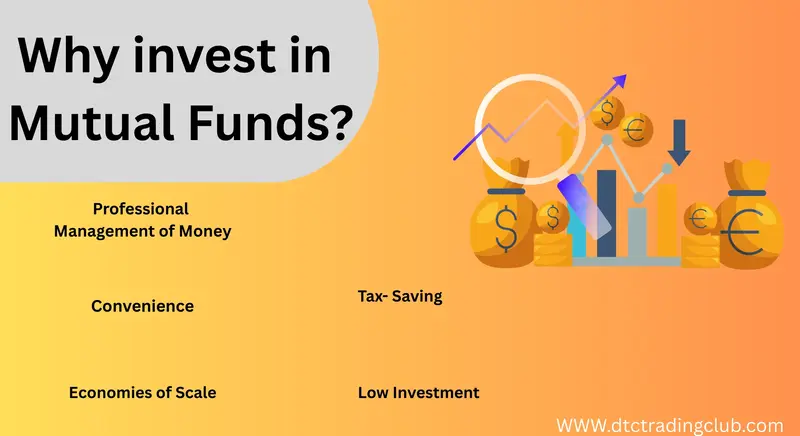Introduction:
Mutual funds have become one of the most trusted ways for individuals to grow their money without getting lost in the complexities of the stock market. Whether you’re a complete beginner or someone looking to improve your investing strategy, understanding how to buy mutual funds the right way can make a huge difference.
In this guide, we’ll walk through five proven strategies to help you invest in mutual funds safely and smartly. You’ll learn how to invest in mutual funds, how to open a mutual fund account, how to choose among the most recommended mutual funds, and how to identify the top mutual funds for your needs.
By the end, you’ll have a step-by-step roadmap to start investing confidently—without falling for hype or making costly mistakes.

Table of Contents
What Are Mutual Funds & Why They’re a Smart Investment Choice
A mutual fund collects money from many investors and puts it into a mix of stocks, bonds, or other assets, giving you instant diversification in one go. The biggest advantage is that you get professional management and built-in diversification without having to buy individual stocks yourself.
Types of Mutual Funds
| Fund Type | Risk Level | Ideal For |
| Equity Funds | High | Long-term growth seekers |
| Debt Funds | Low to Medium | Stability & fixed income |
| Hybrid Funds | Medium | Balanced risk & return |
| Index Funds | Medium | Passive, low-cost investing |
| ELSS (Tax Saving) | Medium to High | Tax benefits + growth |
Benefits of Mutual Funds
- Professional fund management.
- Diversification reduces risk.
- Easy entry and exit.
- Suitable for both small and large investments.
Myths vs Facts
| Myth | Fact |
| You need ₹50,000 to start investing. | You can start with just ₹500 via SIP. |
| Mutual funds guarantee fixed returns. | Returns depend on market performance. |
| Only experts can choose good funds. | Beginners can start with index or balanced funds. |
Educate Yourself Before You Buy Mutual Funds
Before you put a single rupee into any investment, it’s important to understand what you’re buying. Mutual funds are not one-size-fits-all—they vary by risk level, investment goal, and time horizon.
Key Points to Learn:
- Risk Profile: Conservative, moderate, or aggressive.
- Time Frame: Short-term (1–3 years) vs. long-term (5+ years).
- Fund Performance: Look at 3-year and 5-year returns, not just 1-year spikes.
Mini Case Study:
Rahul, a 26-year-old software engineer, wanted to save for a down payment on a house in 5 years. Instead of putting all his money in equity funds, he split his investment—60% in equity mutual funds for growth and 40% in debt funds for stability. This balance helped him grow his money steadily while keeping risks in check.
Choose the Right Type of Mutual Fund

Choosing the right type of mutual fund is like laying the foundation for your investment journey — get this step right, and the rest becomes much easier.
Matching Goals to Funds
- Retirement Planning: Equity or Flexi Cap Funds.
- Tax Savings: ELSS Funds.
- Emergency Fund: Short-Term Debt Funds.
- Steady Income: Hybrid or Balanced Funds.
Pro Tip: Don’t just chase “top mutual funds” from last year—market conditions change, so focus on long-term consistency.
Open a Mutual Fund Account Safely
You can open a mutual fund account in minutes through a bank, the AMC website, or a trusted investment platform.
How to Invest in Mutual Funds Online: Step-by-Step
- Choose Your Platform – Select a SEBI-registered AMC or app.
- Complete KYC—Provide PAN, Aadhaar, bank details, and photo.
- Select Your Fund—Based on your investment goal.
- Choose SIP or Lump Sum—start small if you’re new.
- Make Your First Investment—Review details before confirming.
Safety Checklist Before You Buy Mutual Funds
- Verify AMC is SEBI registered.
- Use only official apps/websites.
- Never share OTPs or passwords.
- Avoid schemes that promise “guaranteed” returns.
Pro Investor Insights
- Look for expense ratios below 1% for equity funds.
- Check the fund manager’s past record.
- Consider Direct Plans over Regular Plans for better returns.
Start Small & Use the Right Investment Strategy

If you’re just starting, SIP (Systematic Investment Plan) is your best friend.
Why SIP Works:
Investing a fixed amount every month helps you average out costs and benefit from compounding.
Example of Compounding Power
If you invest ₹5,000 every month for 10 years at a 12% annual return, your ₹6 lakh investment could grow to about ₹11.6 lakh—almost doubling your money.
Stick to the Plan & Review Periodically
Mutual fund investing is not a “buy today, sell tomorrow” game.
Review Every 6–12 Months:
- Check returns vs. benchmark.
- See if the fund still matches your goals.
- Rebalance the portfolio if needed.
Most Recommended Mutual Funds in 2025
| Category | Fund Type | Why It’s Recommended |
| Best for Beginners | Large Cap Index Fund | Low cost, stable growth |
| Best for Tax Saving | ELSS Fund | Section 80C benefit |
| Best for Long Term | Flexi Cap Fund | Growth + diversification |
| Best for Stability | Growth and diversification | Short-Term Debt Fund |
Advanced Tips for Experienced Investors
- Rebalance the portfolio yearly to maintain asset allocation.
- Use SWP (Systematic Withdrawal Plan) for steady income after retirement.
- Diversify across AMCs to reduce fund house risk.
Common Mistakes to Avoid When You Buy Mutual Funds
- Investing without a goal.
- Switching funds too often.
- Ignoring expense ratio.
- Over-diversifying.
FAQs:
Q1: What is the safest way to invest in mutual funds?
ANSWER: Use SIP in large-cap or balanced funds through trusted platforms.
Q2: Can I lose all my money in a mutual fund?
ANSWER: Highly unlikely if diversified; only possible if all invested companies collapse.
Q3: How are mutual fund returns taxed?
ANSWER: Equity funds have LTCG after 1 year; debt funds have different tax rules.
Q4: How much money do I really need to start investing?
ANSWER: You don’t need a big amount to begin. In fact, you can start your mutual fund journey with as little as ₹500 a month through an SIP.
Conclusion—Your Safe Roadmap to Mutual Fund Investing
By educating yourself, choosing the right funds, opening an account safely, starting small, and reviewing regularly, you can build a strong and secure investment portfolio.
Mutual funds are not a shortcut to wealth—but with patience and smart decisions, they can be a powerful tool for financial freedom.
